Ethan(2H)ol
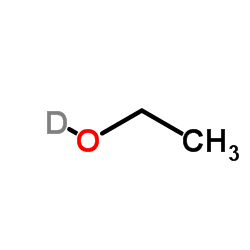
Ethan(2H)ol structure
|
Common Name | Ethan(2H)ol | ||
|---|---|---|---|---|
| CAS Number | 925-93-9 | Molecular Weight | 47.075 | |
| Density | 0.8±0.1 g/cm3 | Boiling Point | 72.6±3.0 °C at 760 mmHg | |
| Molecular Formula | C2H5DO | Melting Point | -130ºC(lit.) | |
| MSDS | Chinese USA | Flash Point | 8.9±0.0 °C | |
| Symbol |

GHS02 |
Signal Word | Danger | |
| Name | Methyl 2-(5-fluoropyrimidin-2-yl)acetate |
|---|---|
| Synonym | More Synonyms |
| Density | 0.8±0.1 g/cm3 |
|---|---|
| Boiling Point | 72.6±3.0 °C at 760 mmHg |
| Melting Point | -130ºC(lit.) |
| Molecular Formula | C2H5DO |
| Molecular Weight | 47.075 |
| Flash Point | 8.9±0.0 °C |
| Exact Mass | 47.048141 |
| PSA | 20.23000 |
| LogP | -0.19 |
| Vapour Pressure | 82.8±0.2 mmHg at 25°C |
| Index of Refraction | 1.354 |
| Storage condition | Flammables area |
Synonym:Ethano Section 2 - COMPOSITION, INFORMATION ON INGREDIENTS
Risk Phrases: 11 Section 3 - HAZARDS IDENTIFICATION EMERGENCY OVERVIEW
Highly flammable.Flammable liquid. Potential Health Effects Eye: Contact with eyes may cause severe irritation, and possible eye burns. Skin: May cause skin irritation. Prolonged and/or repeated contact may cause defatting of the skin and dermatitis. May be absorbed through the skin. Ingestion: Cannot be made non-poisonous. Causes gastrointestinal irritation with nausea, vomiting and diarrhea. May cause kidney damage. May cause liver damage. May cause central nervous system depression, characterized by excitement, followed by headache, dizziness, drowsiness, and nausea. Advanced stages may cause collapse, unconsciousness, coma and possible death due to respiratory failure. Inhalation: Inhalation of high concentrations may cause central nervous system effects characterized by nausea, headache, dizziness, unconsciousness and coma. May cause respiratory tract irritation. Prolonged exposure may result in dizziness and general weakness. Chronic: Prolonged or repeated eye contact may cause conjunctivitis. Prolonged or repeated exposure may cause adverse reproductive effects. May cause liver and kidney damage. Section 4 - FIRST AID MEASURES Eyes: Immediately flush eyes with plenty of water for at least 15 minutes, occasionally lifting the upper and lower eyelids. Get medical aid. Skin: Flush skin with plenty of water for at least 15 minutes while removing contaminated clothing and shoes. Get medical aid if irritation develops or persists. Remove contaminated clothing and shoes. Ingestion: If victim is conscious and alert, give 2-4 cupfuls of milk or water. Get medical aid immediately. Do NOT induce vomiting. If conscious and alert, rinse mouth and drink 2-4 cupfuls of milk or water. Inhalation: Get medical aid immediately. Remove from exposure and move to fresh air immediately. If not breathing, give artificial respiration. If breathing is difficult, give oxygen. Notes to Physician: Activated charcoal does not reduce ethanol absorption. Section 5 - FIRE FIGHTING MEASURES General Information: As in any fire, wear a self-contained breathing apparatus in pressure-demand, MSHA/NIOSH (approved or equivalent), and full protective gear. Vapors can travel to a source of ignition and flash back. Use water spray to keep fire-exposed containers cool. Water may be ineffective. Material is lighter than water and a fire may be spread by the use of water. Flammable liquid and vapor. Vapors may be heavier than air. They can spread along the ground and collect in low or confined areas. May polymerize explosively when involved in a fire. Containers may explode when heated. Extinguishing Media: For small fires, use dry chemical, carbon dioxide, water spray or alcohol-resistant foam. Water may be ineffective. For large fires, use water spray, fog or alcohol-resistant foam. Do NOT use straight streams of water. Cool containers with flooding quantities of water until well after fire is out. Section 6 - ACCIDENTAL RELEASE MEASURES General Information: Use proper personal protective equipment as indicated in Section 8. Spills/Leaks: Absorb spill with inert material (e.g. vermiculite, sand or earth), then place in suitable container. Avoid runoff into storm sewers and ditches which lead to waterways. Clean up spills immediately, observing precautions in the Protective Equipment section. Remove all sources of ignition. Provide ventilation. Section 7 - HANDLING and STORAGE Handling: Wash hands before eating. Remove contaminated clothing and wash before reuse. Use with adequate ventilation. Avoid contact with eyes, skin, and clothing. Empty containers retain product residue, (liquid and/or vapor), and can be dangerous. Keep container tightly closed. Keep away from heat, sparks and flame. Avoid ingestion and inhalation. Do not pressurize, cut, weld, braze, solder, drill, grind, or expose empty containers to heat, sparks or open flames. Storage: Keep away from heat, sparks, and flame. Keep away from sources of ignition. Store in a tightly closed container. Store in a cool, dry, well-ventilated area away from incompatible substances. Flammables-area. Section 8 - EXPOSURE CONTROLS, PERSONAL PROTECTION Engineering Controls: Facilities storing or utilizing this material should be equipped with an eyewash facility and a safety shower. Use process enclosure, local exhaust ventilation, or other engineering controls to control airborne levels. Exposure Limits CAS# 925-93-9: Personal Protective Equipment Eyes: Wear appropriate protective eyeglasses or chemical safety goggles as described by OSHA's eye and face protection regulations in 29 CFR 1910.133 or European Standard EN166. Skin: Wear appropriate protective gloves to prevent skin exposure. Clothing: Wear appropriate protective clothing to minimize contact with skin. Respirators: A respiratory protection program that meets OSHA's 29 CFR 1910.134 and ANSI Z88.2 requirements or European Standard EN 149 must be followed whenever workplace conditions warrant respirator use. Wear a NIOSH/MSHA or European Standard EN 149 approved full-facepiece airline respirator in the positive pressure mode with emergency escape provisions. Section 9 - PHYSICAL AND CHEMICAL PROPERTIES Physical State: Liquid Color: clear, colorless Odor: Not available. pH: Not available. Vapor Pressure: Not available. Viscosity: Not available. Boiling Point: 78 deg C @ 760.00mm Hg Freezing/Melting Point: Not available. Autoignition Temperature: 363 deg C ( 685.40 deg F) Flash Point: 12 deg C ( 53.60 deg F) Explosion Limits, lower: 3.3 Explosion Limits, upper: 19 Decomposition Temperature: Solubility in water: miscible Specific Gravity/Density: .8010g/cm3 Molecular Formula: C2H5DO Molecular Weight: 47.07 Section 10 - STABILITY AND REACTIVITY Chemical Stability: Stable under normal temperatures and pressures. Conditions to Avoid: High temperatures, ignition sources, strong oxidants. Incompatibilities with Other Materials: Oxidizing agents, peroxides, acids, acid chlorides, acid anhydrides, alkali metals, ammonia and moisture. Hazardous Decomposition Products: Carbon monoxide, irritating and toxic fumes and gases, carbon dioxide. Hazardous Polymerization: Has not been reported. Section 11 - TOXICOLOGICAL INFORMATION RTECS#: CAS# 925-93-9 unlisted. LD50/LC50: Not available. Carcinogenicity: ETOH-D - Not listed by ACGIH, IARC, or NTP. Section 12 - ECOLOGICAL INFORMATION Other For more information, see "HANDBOOK OF ENVIRONMENTAL FATE AND EXPOSURE DATA." Section 13 - DISPOSAL CONSIDERATIONS Dispose of in a manner consistent with federal, state, and local regulations. Section 14 - TRANSPORT INFORMATION IATA No information available. IMO No information available. RID/ADR No information available. Section 15 - REGULATORY INFORMATION European/International Regulations European Labeling in Accordance with EC Directives Hazard Symbols: F Risk Phrases: R 11 Highly flammable. Safety Phrases: S 7 Keep container tightly closed. S 16 Keep away from sources of ignition - No smoking. WGK (Water Danger/Protection) CAS# 925-93-9: No information available. Canada None of the chemicals in this product are listed on the DSL/NDSL list. CAS# 925-93-9 is not listed on Canada's Ingredient Disclosure List. US FEDERAL TSCA CAS# 925-93-9 is not listed on the TSCA inventory. It is for research and development use only. SECTION 16 - ADDITIONAL INFORMATION N/A |
| Precursor 9 | |
|---|---|
| DownStream 10 | |
|
Reactive collisions in quadrupole cells. 6. H/D exchange reactions of protonated alkylbenzenes with D2O, CH3OD, and C2H5OD. Ni J and Harrison AG.
Can. J. Chem. 73(11) , 1779-1784, (1995)
|
|
|
Synthesis of ethanol-d. Pasto DJ and Meyer GR.
J. Org. Chem. 33(3) , 1257, (1968)
|
|
|
A quantitative Raman spectroscopic investigation of hydrogen-bonding in ethanol and ethanol-d1. Spectrochimica Acta Part A: Molecular Spectroscopy. Edwards HGM, et al. Spectrochim. Acta. A. Mol. Biomol. Spectrosc. 45(11) , 1165-1171, (1989)
|
| 1,1,1,3,3,3-Hexafluoro-2-propanol-d(1) |
| O-deuterio-1,1,1,3,3,3-hexafluoro-propan-2-ol |
| ethanol-O-d |
| hexafluoroisopropan(ol-d) |
| deutero ethanol |
| ethyl alcohol-d |
| O-deuterioethanol |
| Ethan(H)ol |
| Ethanol-d |
| Hexafluorisopropylalkohol-d(1) |
| ETHANOL-D1, (CONTAINS 5 PERCENT D2O) |
| 1,1,1,3,3,3-hexafluoropropan-2-ol-d1 |
| ETHYL ALCOHOL-OD |
| EINECS 213-128-9 |
| ethan[2H]ol |
| ETHANOL D1 |
| 1,1,1,3,3,3-Hexafluoro-2-propan(ol-d) |
| ETHANOL-D1 |
| d-Hexafluorpropanol-2 |
| MFCD00044669 |
| ETHAN(OL-D) |
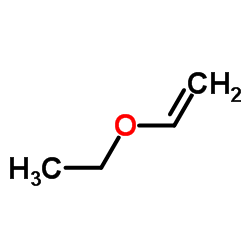 CAS#:109-92-2
CAS#:109-92-2 CAS#:64-17-5
CAS#:64-17-5 CAS#:141-52-6
CAS#:141-52-6 CAS#:811-98-3
CAS#:811-98-3 CAS#:141-78-6
CAS#:141-78-6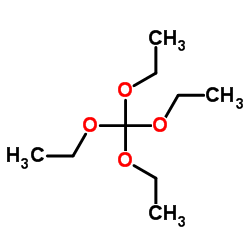 CAS#:78-09-1
CAS#:78-09-1 CAS#:352-93-2
CAS#:352-93-2 CAS#:127022-76-8
CAS#:127022-76-8 CAS#:555-75-9
CAS#:555-75-9 CAS#:3167-63-3
CAS#:3167-63-3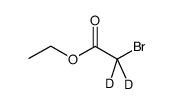 CAS#:14341-47-0
CAS#:14341-47-0 CAS#:637-92-3
CAS#:637-92-3 CAS#:104-15-4
CAS#:104-15-4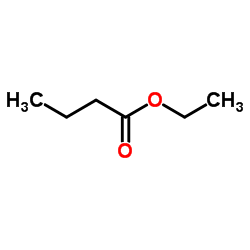 CAS#:105-54-4
CAS#:105-54-4 CAS#:107-92-6
CAS#:107-92-6 CAS#:26387-53-1
CAS#:26387-53-1 CAS#:676-80-2
CAS#:676-80-2 CAS#:1455-13-6
CAS#:1455-13-6